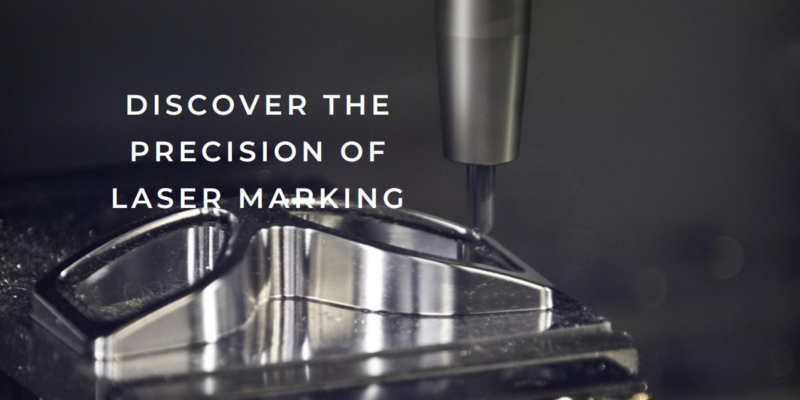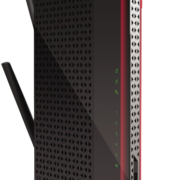
In the world of manufacturing and industrial design, precision is paramount. From intricate circuit boards to delicate medical instruments, every detail matters. This quest for perfection has led to the rise of laser marking as a preferred method for engraving and labeling various materials. In this comprehensive guide, we’ll delve into the fascinating world of laser marking, exploring its precision, applications, and the transformative impact it’s having across industries.
The Evolution of Laser Marking Technology
Laser marking, also known as laser engraving or laser etching, has its roots in the development of laser technology in the mid-20th century. The ability to concentrate light into a powerful, focused beam opened up a world of possibilities for precise material processing. Early applications of laser marking were primarily in industrial settings, where manufacturers utilized it for marking part numbers, serial numbers, and other identification information on metal and plastic components.
As laser technology advanced, so did the capabilities of laser marking systems. Today, modern laser marking machines leverage sophisticated software control and high-powered lasers to achieve incredibly precise results on a wide range of materials, including metals, plastics, ceramics, and even organic materials like wood and leather. This evolution has propelled laser marking from a niche industrial process to a versatile tool with applications spanning multiple industries.
The Precision of Laser Marking
At the heart of laser marking’s appeal is its unparalleled precision. Unlike traditional methods such as mechanical engraving or chemical etching, which can be prone to inconsistencies and inaccuracies, laser marking offers unmatched control and repeatability. This precision is achieved through the precise manipulation of the laser beam, which can be adjusted to varying intensities, wavelengths, and focal lengths to achieve the desired marking effect.
One key factor contributing to the precision of laser marking is the minimal heat-affected zone (HAZ) generated during the process. Unlike traditional engraving methods that rely on physical contact or chemical reactions to remove material, laser marking involves non-contact ablation, where the material is vaporized directly by the laser beam. This results in minimal thermal distortion or damage to the surrounding area, allowing for crisp, precise markings even on delicate materials.
Applications of Laser Marking
The precision and versatility of laser marking make it suitable for a wide range of applications across diverse industries. In the automotive sector, laser marking is used for part identification, traceability, and branding on components ranging from engine blocks to dashboard controls. In electronics manufacturing, laser marking enables permanent serialization and labeling of circuit boards, connectors, and semiconductor chips.
The medical industry relies on laser marking for the precise engraving of surgical instruments, medical devices, and implants, ensuring traceability and compliance with stringent regulatory requirements. In the aerospace and defense sectors, laser marking is utilized for part identification, serialization, and anti-counterfeiting measures on critical components such as aircraft engines, missile casings, and weapon systems.
Advantages of Laser Marking
Beyond its precision and versatility, laser marking offers several distinct advantages over traditional marking methods. One significant advantage is its non-contact nature, which eliminates the need for masks, stencils, or physical tooling, reducing setup time and enabling rapid prototyping and customization. Additionally, laser marking produces permanent, high-contrast markings that are resistant to fading, abrasion, and environmental exposure, ensuring long-lasting legibility and durability.
Furthermore, laser marking is a highly efficient and environmentally friendly process. Unlike chemical etching or solvent-based marking techniques, laser marking generates minimal waste and requires no consumables such as inks or solvents. This not only reduces operational costs but also minimizes environmental impact, making laser marking a sustainable choice for manufacturers seeking to minimize their carbon footprint.
The Future of Laser Marking
As technology continues to advance, the future of laser marking looks brighter than ever. Emerging innovations such as ultrafast lasers, additive manufacturing, and integrated robotic systems are expanding the capabilities of laser marking and unlocking new possibilities for precision engraving and labeling. Additionally, advancements in artificial intelligence and machine learning are enabling smarter, more autonomous laser marking systems capable of adapting to changing production requirements and optimizing process parameters in real-time.
Technological Evolution: From Concept to Precision Tool
Laser marking’s inception traces back to the advent of laser technology itself. Initially, lasers were employed for rudimentary tasks such as cutting and welding. However, it wasn’t long before the precision and versatility of lasers were recognized, leading to their integration into marking processes. Early laser marking systems were rudimentary, offering basic marking capabilities primarily for industrial applications.
Over time, relentless research and development efforts propelled laser marking technology forward. Advancements in laser sources, optics, and control systems revolutionized the precision and speed of marking processes. The introduction of fiber lasers, for instance, marked a significant milestone, offering enhanced beam quality and reliability. Coupled with sophisticated software algorithms, these innovations enabled finer control over marking parameters, paving the way for intricate designs and high-resolution markings.
Nuanced Applications: Beyond Surface Marking
While surface marking remains one of the most common applications of laser marking, the technology’s versatility extends far beyond mere surface engraving. Laser marking systems are capable of marking various materials, including metals, plastics, ceramics, and even organic substrates. Moreover, laser marking isn’t confined to flat surfaces; it can be applied to curved, irregular, and three-dimensional objects with equal precision.
One notable application of laser marking is deep engraving, wherein the laser beam penetrates the material, creating permanent markings below the surface. This technique finds use in applications requiring superior durability and resistance to wear, such as tool and die making, firearm engraving, and mold manufacturing. Additionally, laser marking enables color marking through processes like annealing and color change, adding aesthetic appeal and functional value to products.
Advantages Beyond Precision: Efficiency and Sustainability
While precision remains the hallmark of laser marking, its advantages extend beyond accuracy alone. Laser marking offers unparalleled efficiency, thanks to its non-contact nature and digital control capabilities. Unlike conventional marking methods that rely on physical tools or chemical agents, laser marking requires minimal setup time and eliminates the need for consumables, resulting in streamlined production processes and reduced operational costs.
Furthermore, laser marking is inherently sustainable, aligning with the growing emphasis on eco-friendly manufacturing practices. By minimizing waste generation and eliminating the use of harsh chemicals, laser marking reduces the environmental footprint of marking operations. This sustainability aspect is particularly significant in industries striving to achieve carbon neutrality and comply with stringent regulatory standards.
In conclusion, laser marking stands as a testament to the marriage of precision engineering and cutting-edge technology. Its ability to deliver intricate, permanent markings with unmatched accuracy and efficiency has made it an indispensable tool across a wide range of industries. As we look to the future, the continued evolution of laser marking technology promises to revolutionize manufacturing, design, and product identification, driving innovation and excellence in the years to come.










